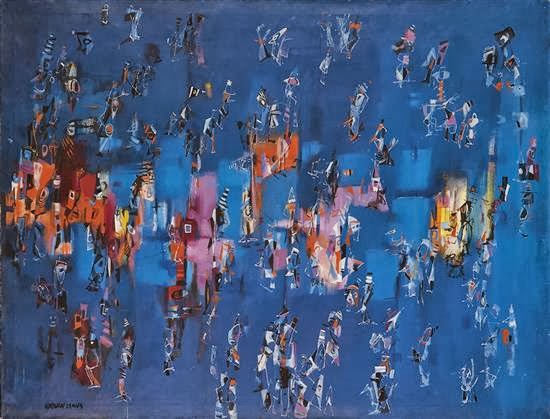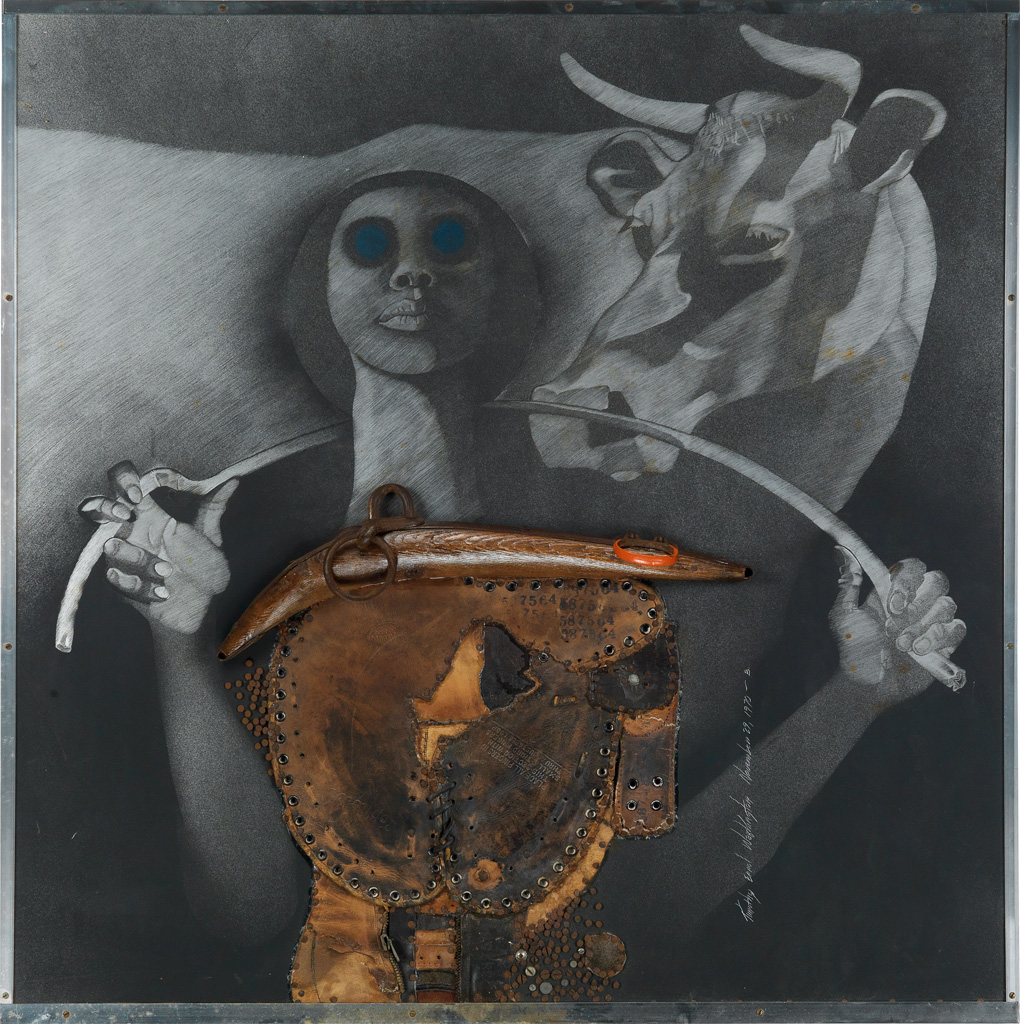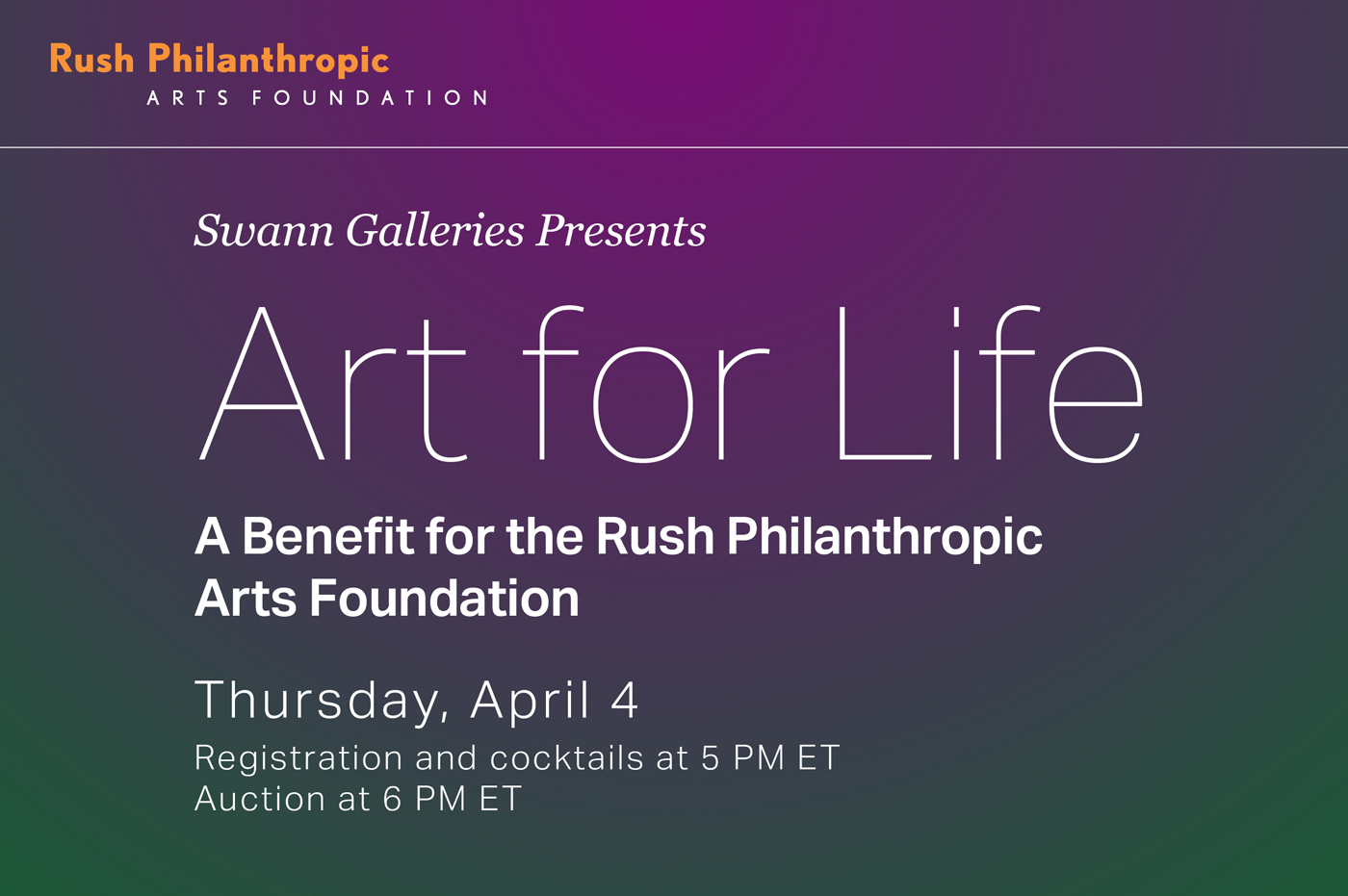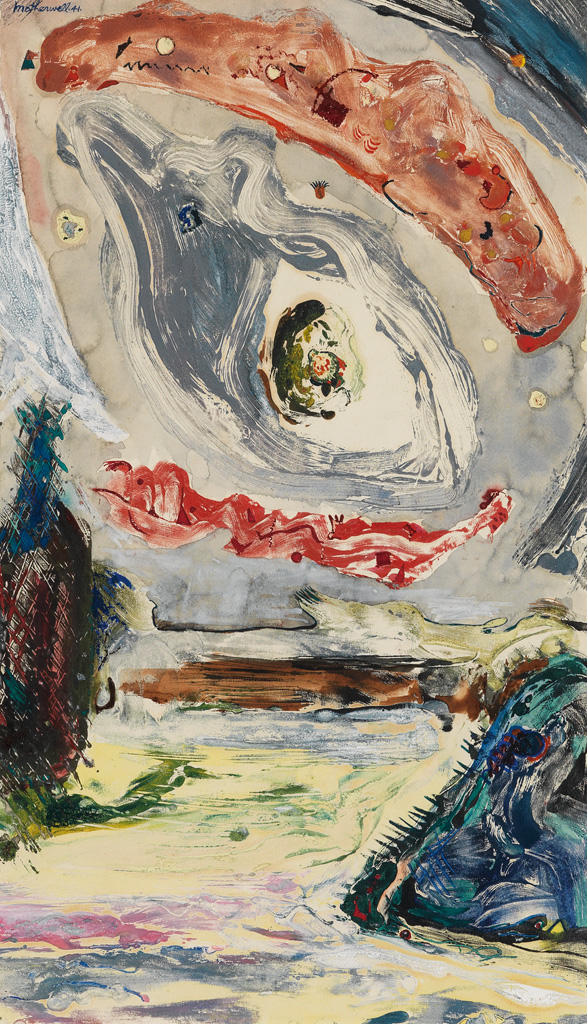A Previously Unknown Norman Lewis Painting

The image chosen for the cover of Swann’s upcoming sale Point of Departure: Postwar African-American Fine Art is a circa 1957 Untitled oil on canvas by Norman Lewis. The previously unrecorded painting was acquired directly from the artist by a young woman who took private art lessons from Lewis in Harlem. The two remained life-long friends, even after she moved to Chicago, and upon visiting Lewis in New York in the late 1950s, she acquired this large painting from his studio.
It is not only an exceptional example of Norman Lewis’s work, but an exciting discovery, as it is one of the most significant 1950s calligraphic figure paintings by Norman Lewis that we have seen, and it has never been publicly exhibited.
Norman Lewis gained national recognition by the mid 1950s, having had a series of well-received solo exhibitions at the Marian Willard Gallery in New York. His famous Migrating Birds, 1953, won the Carnegie International Award in Painting in 1955, making him the first African-American artist to receive this prestigious prize. In 1956, Lewis was selected to represent the United States in American Artists Paint the City, an exhibition of 46 works by 36 artists in the American pavilion during the 28th Venice Biennale. Lewis joined fellow Willard Gallery artists Lyonel Feininger and Mark Tobey; he and Jacob Lawrence were the only African-American artists included. He showed at the Willard Galley again in February of 1957, his sixth solo exhibition there since 1949, then spent several months traveling to France, Italy, Spain and North Africa.
In this painting, the artist continues his investigation of the “ritual” calligraphic figures that he began as early as 1950, while simultaneously shifting toward color field painting. The intense blue canvas reveals both fiery and cool undertones, while simultaneously obscuring and revealing a large, dense composition of figures. The owner’s family recalls Lewis’s inspiration was from a Moroccan experience; Lewis described the scene of a city after sunset, when little charcoal fires were lit and everyone prepared the evening meal. This work is similar in its multitude of figures to other large promenade paintings like Carnival, circa 1957, collection of the late Albert Murray, and Untitled (Tournament), late 1950s, Sheldon Museum of Art, Lincoln, Nebraska. However, this work’s bright palette, detail and clarity distinguishe it from other paintings of the period. Through the 1950s, Lewis navigated between Abstract Expressionism and elements of figuration in his studio. This canvas reveals his continued attention to the figure in his painting–with wonderfully expressive characterizations, and suggests a greater involvement of the artist in the balancing act between his painting dualities. The artist wrote about the diverse forces that shaped his work in a forward to his 1954 exhibition:
“Art is to me the expression of unconscious experiences common to all men, which have been strained through the artist’s own peculiar associations and use of his medium. In this sense, it becomes an activity of discovery, emotional, intellectual and technical, not only for the artist, but for those who view his work.”













![Grace Meschery-McCormack shares about two copies of Fernando de Rojas’s ‘La Célestine,’ including a limited edition copy illustrated by Pablo Picasso.
At auction April 22. Learn more about the works at the link in our bio.
#Rarebooks #rarebookdealer #antiquarianbooks #auctions
_______________________________________
Music Credit:
Schubert - Piano Quintet in A major ‘The Trout’, D. 667 - IV. Andantino – Allegretto
Music provided by Classical Music Copyright Free on Youtube [https://tinyurl.com/visit-cmcf]
Watch: • Schubert - Piano Quintet in A major ‘...]](https://scontent-iad3-1.cdninstagram.com/v/t51.75761-15/491443494_18499096345036585_5935932878956098058_n.jpg?stp=dst-jpg_e35_tt6&_nc_cat=107&ccb=7-5&_nc_sid=18de74&_nc_ohc=OlBShB8qEWAQ7kNvwHbrXqd&_nc_oc=Adn09Fh3YL-11OkpQcrYGgFN9beLpm0IfGUn2bwN7iJs6d4v8qMeP8kSYmCw82y2ewU&_nc_zt=23&_nc_ht=scontent-iad3-1.cdninstagram.com&edm=AM6HXa8EAAAA&_nc_gid=lfY4_2vE-yX6Vkb-vQvT3Q&oh=00_AfEAHFW3zs3K6R91vJtUnvkHnVOVTzShV6Nz4h29OEu07Q&oe=681A3E11)




